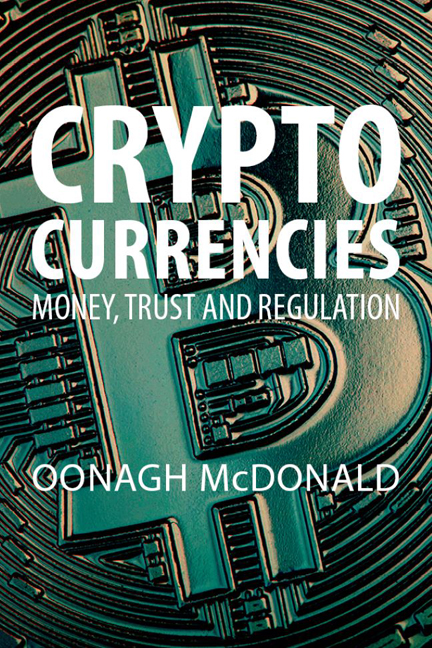Book contents
- Frontmatter
- Contents
- Preface
- Acronyms
- 1 Introduction: Bitcoin beginnings
- 2 New cryptocurrencies and new developments
- 3 Stablecoins: the search for stability
- 4 Initial coin offerings: the “Wild West”
- 5 The regulatory response to ICOs
- 6 Global stablecoins: Libra
- 7 Reactions to stablecoins
- 8 Central banks and central bank digital currencies
- 9 The decline of cash
- 10 Credit and trust
- 11 Epilogue: the crypto winter
- Appendix: smart contracts
- Notes
- Index
10 - Credit and trust
Published online by Cambridge University Press: 22 December 2023
- Frontmatter
- Contents
- Preface
- Acronyms
- 1 Introduction: Bitcoin beginnings
- 2 New cryptocurrencies and new developments
- 3 Stablecoins: the search for stability
- 4 Initial coin offerings: the “Wild West”
- 5 The regulatory response to ICOs
- 6 Global stablecoins: Libra
- 7 Reactions to stablecoins
- 8 Central banks and central bank digital currencies
- 9 The decline of cash
- 10 Credit and trust
- 11 Epilogue: the crypto winter
- Appendix: smart contracts
- Notes
- Index
Summary
In previous chapters, we have explored some of the major motivations for central banks considering the introduction of CBDC. One such consideration was financial inclusion, making banking services available to the unbanked. In the United States approximately 7.1 million households were unbanked in 2019. There are, however, much simpler ways of providing bank account access to those on low incomes than via a CBDC and it is something many other countries have been addressing. The UK, for example, introduced in the mid-1990s by agreement with some of the leading banks what were then called “basic bank accounts”. These were (and still are in the newer version) a simplified form of a current account, providing direct debit facilities, a debit card, access to ATMs, and over-the-counter (OTC) banking, but no overdraft facilities. These accounts do not attract any charges. In 2014, the EU Directive extended the provision of fee-free bank accounts to each member state (which applied to the UK then as well), which led to the expansion of such provision in the UK, following its implementation. By the middle of 2016, 4 million new bank accounts had been opened in addition to the 3 million existing “basic bank accounts”. By September 2020, the number of the unbanked had fallen to 1.2 million. The remaining the lack of take-up is thought to be due to language barriers and, lack of ID for the KYC requirements. Provision for the unbanked does not require the introduction of CBDC accounts, but the introduction of “free banking” for those on low incomes.
The other motivation for CBDC is faster payments. In a recent article, Sir Jon Cunliffe, Chair of the Committee on Payments and Market Infrastructure, explained that it can still take as long as ten days to transfer money to some destinations at a cost off 10 per cent of the transaction, if it has to pass through correspondent banks and through a number of currencies for certain jurisdictions. 2 However, not all international transfers take as long as that. The Society for Worldwide Interbank Financial Telecommunications’ (SWIFT) timeline for international transfers is one to four business days.
- Type
- Chapter
- Information
- CryptocurrenciesMoney, Trust and Regulation, pp. 175 - 194Publisher: Agenda PublishingPrint publication year: 2023



